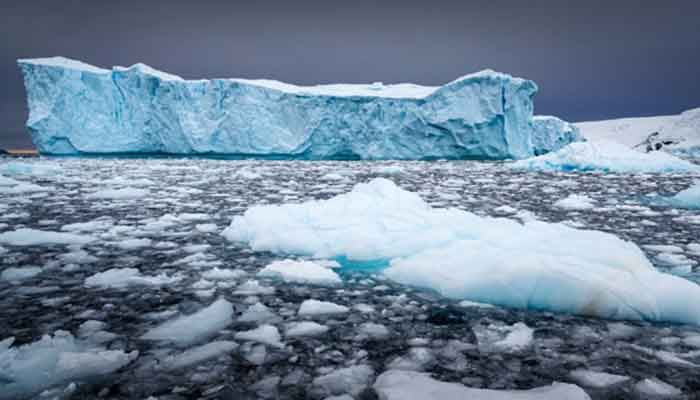
Desk Report
Publish: 28 Oct 2020, 01:04 pm

According to research on Tuesday, the loss of billions of tons of ice from the frozen spaces of the Planet is expected to raise global temperatures by an additional 0.4 degrees Celsius, highlighting the risk of a "vicious circle" of warming.
Since the late 1970s, Arctic summer sea ice levels have decreased by more than 10 percent per decade, and over the last century, mountain glaciers have lost approximately 250 billion tonnes of ice annually, reports AFP.
Ice loss from the ice sheets of the West Antarctic and Greenland is accelerating and far outstripping what scientists considered to be the worst-case melt scenarios until recently.
Decades of study have attempted to measure how the melting ice of the Planet would lead to sea level rise. Antarctica and Greenland alone hold ample frozen water to raise the height of the oceans by around 60 meters.
However, little study has attempted to determine how ice loss will contribute to the already 1.0 degree C of fossil fuel global warming emissions since the beginning of the Industrial Era.
In a number of emission scenarios, scientists at Potsdam Institute for Climate Effect Research (PIK) in Germany used a climate model that includes components of atmosphere, ocean, sea and land ice data to forecast temperature change from ice loss.
They found that the melting of Arctic sea ice, mountain glaciers and the polar ice caps would increase temperatures by 0.4C under current levels of atmospheric CO2-approximately 400 parts per million.
That's on top of the 1.5C of warming that our current levels of emissions have made all but unavoidable, and the Paris climate agreement's safer limit on global warming.
The main driver of temperature gain from ice loss would be due to a process known as albedo feedback, in which heat-reflective bright ice is replaced by absorbant darker sea water and/or soil.
“If global ice masses shrink, this changes how much of the sunlight that hits the Earth’s surface is reflected back into space,” said lead author Nico Wunderling.
He likened the albedo effect of wearing either white or black clothes in summer.
“If you wear dark, you heat up more easily,” Wunderling noted.
This is one of Earth’s so-called climate “feedback loops”, in which increased temperatures lead to further ice loss, which in turn further increases temperatures.
– Tipping point –
Other ways that temperatures would rise further as ice receded include increased water vapour in the atmosphere, increasing the greenhouse effects, said authors of the study published in Nature Communications.
Looking primarily at Arctic sea ice, which could be entirely absent during summer months within decades, unlike polar ice caps, they discovered that its melting alone would add 0.2C to global temperatures.
By contrast, the largest ice masses in Greenland and Western Antarctica are enormous and are likely to take centuries to completely melt, even if emissions continue their unabated rise.
But the authors highlighted the risk that those enormous bodies of frozen water could soon reach a point of no return as temperatures creep ever higher.
Given the unknowns surrounding ice cap tipping points, Wunderling told AFP it would be best to act in “a risk-averse” way and try to drag down emissions as soon as possible.
“With continued global warming, it becomes more and more likely that we cross tipping points — not just in the ice-sheets, but also in other parts of the climate system,” he said.
“If the Paris Agreement is fulfilled we can avoid many of the strongest and potentially irreversible impacts on Earth’s ice masses, the global climate and humanity.”
Subscribe Shampratik Deshkal Youtube Channel
© 2024 Shampratik Deshkal All Rights Reserved. Design & Developed By Root Soft Bangladesh